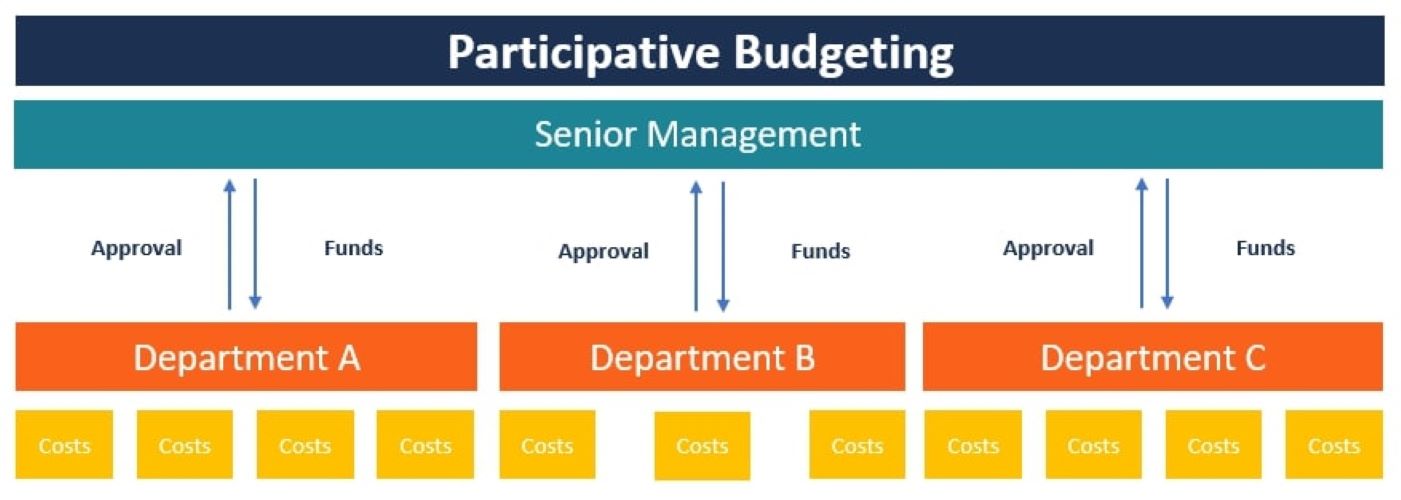Home>Finance>Why Should A Bond Issuer Care About Secondary Market Liquidity?


Finance
Why Should A Bond Issuer Care About Secondary Market Liquidity?
Published: February 23, 2024
Learn why secondary market liquidity is crucial for bond issuers in the world of finance, and how it impacts their financial performance and investor perception. Understand the importance of maintaining a liquid secondary market for bonds.
(Many of the links in this article redirect to a specific reviewed product. Your purchase of these products through affiliate links helps to generate commission for LiveWell, at no extra cost. Learn more)
Table of Contents
Introduction
Welcome to the intricate world of bond markets, where the concept of liquidity plays a pivotal role in determining the efficiency and functionality of these markets. As a bond issuer, understanding the significance of secondary market liquidity is crucial for comprehending the dynamics that influence the trading and pricing of bonds after their initial issuance. Secondary market liquidity refers to the ease with which bonds can be bought or sold on the open market. This liquidity is a key consideration for bond issuers as it directly impacts the attractiveness of their bonds to investors and the cost of borrowing.
In this article, we will delve into the realm of secondary market liquidity and explore why it holds such relevance for bond issuers. We will unravel the factors that influence secondary market liquidity, the strategies for enhancing it, and the broader implications for bond issuers. By the end of this exploration, you will have gained valuable insights into the multifaceted nature of secondary market liquidity and its profound impact on the bond market ecosystem. So, let's embark on this enlightening journey to decipher the intricacies of secondary market liquidity and its implications for bond issuers.
What is Secondary Market Liquidity?
Secondary market liquidity refers to the ease and efficiency with which bonds can be bought or sold on the open market after their initial issuance. It reflects the ability of market participants to execute sizable transactions with minimal impact on the price of the bond. In essence, it measures the depth and activity of the market for a particular bond, indicating how quickly and cost-effectively it can be traded.
When a bond is issued, it enters the primary market where it is sold by the issuer to investors. Once the initial issuance is complete, the bond enters the secondary market, where subsequent trading occurs between investors. The liquidity of this secondary market is crucial as it influences the attractiveness of the bond to investors and the cost of borrowing for the issuer. High secondary market liquidity implies that the bond can be easily bought or sold without significantly affecting its price, making it more appealing to investors and reducing the issuer’s cost of borrowing. Conversely, low liquidity can deter investors and lead to higher borrowing costs for the issuer.
The liquidity of a bond in the secondary market is influenced by various factors, including the size of the issue, the number of active market participants, the frequency of trading, and the overall market conditions. Understanding the dynamics of secondary market liquidity is essential for bond issuers, as it directly impacts the marketability and cost of their bonds post-issuance.
Now that we have a fundamental understanding of secondary market liquidity, let’s explore why it holds such significance for bond issuers and the broader implications it carries within the bond market ecosystem.
Importance of Secondary Market Liquidity for Bond Issuers
Secondary market liquidity holds immense importance for bond issuers due to its far-reaching implications on the marketability and cost of their bonds. A liquid secondary market enhances the appeal of a bond to potential investors and reduces the issuer’s cost of borrowing, thus playing a pivotal role in the issuer’s funding and capital management strategies.
One of the primary benefits of strong secondary market liquidity for bond issuers is the increased demand for their bonds. When bonds are easily tradable in the secondary market, investors are more inclined to purchase them, as they have confidence in their ability to liquidate the investment if needed. This heightened demand can lead to lower borrowing costs for the issuer, as the market perceives the bonds as less risky and more desirable. Conversely, bonds with low liquidity may struggle to attract investors, resulting in higher borrowing costs for the issuer.
Furthermore, secondary market liquidity influences the pricing of bonds. In a liquid market, the bid-ask spread tends to be narrower, meaning that the difference between the buying and selling prices of the bond is smaller. This tighter spread reduces transaction costs for investors, making the bonds more attractive and competitive in the market. It also reflects positively on the issuer, as their bonds are seen as more cost-effective investment options for potential buyers.
For bond issuers, the ability to tap into the secondary market for additional funding or to adjust their debt portfolio is essential. A liquid secondary market provides the issuer with flexibility, enabling them to buy back their own bonds, issue new bonds, or exchange existing bonds for better terms. This maneuverability is crucial for managing the issuer’s financial obligations and optimizing their capital structure.
In summary, secondary market liquidity significantly impacts the issuer’s cost of borrowing, marketability of their bonds, and flexibility in managing their debt portfolio. By understanding and actively addressing the factors that influence secondary market liquidity, bond issuers can enhance the appeal and competitiveness of their bonds in the secondary market, ultimately contributing to their long-term financial stability and growth.
Factors Affecting Secondary Market Liquidity
Several factors contribute to the level of liquidity in the secondary market for bonds, influencing the ease and efficiency of trading. Understanding these factors is crucial for bond issuers as they navigate the dynamics of the secondary market and seek to optimize the liquidity of their bonds. Let’s explore some key elements that can impact secondary market liquidity:
- Market Size and Depth: The overall size and depth of the bond market play a significant role in determining liquidity. A larger market with a broad range of bonds and active participants tends to exhibit higher liquidity, as there are more buyers and sellers, facilitating smoother and more efficient trading.
- Issuer Reputation and Credit Quality: The reputation and creditworthiness of the bond issuer directly influence secondary market liquidity. Bonds issued by entities with strong credit ratings and a history of financial stability are more liquid, as investors have confidence in the issuer’s ability to meet its obligations.
- Interest Rate Environment: The prevailing interest rate environment can impact bond liquidity. In periods of economic uncertainty or fluctuating interest rates, investors may demand more liquidity, leading to increased trading activity. Conversely, in stable economic conditions, liquidity may be more consistent.
- Market Perception and Sentiment: Investor sentiment and market perception can significantly affect bond liquidity. Positive news or favorable market sentiment towards a particular bond or issuer can enhance liquidity, while negative sentiment or adverse developments can lead to a decrease in liquidity.
- Regulatory and Market Structure: Regulatory frameworks and market structures can influence liquidity. Transparent and well-regulated markets often exhibit higher liquidity, as they instill confidence and trust among market participants, leading to increased trading activity.
These factors interplay and collectively contribute to the overall liquidity of the secondary bond market. Bond issuers need to closely monitor and assess these elements to gauge the liquidity of their bonds and identify potential areas for improvement. By understanding the intricate web of factors influencing secondary market liquidity, issuers can proactively strategize to enhance the attractiveness and tradability of their bonds in the secondary market.
Strategies for Improving Secondary Market Liquidity
Enhancing secondary market liquidity is a strategic imperative for bond issuers seeking to optimize the marketability and cost-effectiveness of their bonds. By implementing targeted strategies, issuers can actively contribute to improving the liquidity of their bonds in the secondary market. Let’s explore some effective approaches to bolstering secondary market liquidity:
- Enhanced Transparency and Disclosure: Providing comprehensive and timely information about the bond’s terms, financial performance, and market developments can instill confidence in investors and enhance liquidity. Clear and transparent disclosures foster trust and promote trading activity in the secondary market.
- Market-Making Support: Engaging with market makers who are willing to buy and sell the bond can enhance liquidity by providing a continuous market for the bond. Market makers facilitate trading by quoting bid and ask prices, narrowing spreads, and absorbing temporary imbalances in supply and demand.
- Liquidity Provision Programs: Implementing liquidity provision programs where the issuer or a designated party commits to providing liquidity by buying or selling the bond can bolster market confidence and encourage trading. These programs demonstrate a commitment to supporting liquidity and can attract more investors.
- Regular Investor Communication: Maintaining open communication with investors and market participants can foster a deeper understanding of the bond’s attributes and performance. Engaging in regular investor outreach and providing updates can enhance market confidence and stimulate trading activity.
- Issuer-Driven Market Initiatives: Initiating market-driven activities such as investor roadshows, bond repurchase programs, or bond exchange offers can inject momentum into the secondary market, increasing trading volumes and liquidity. These initiatives demonstrate the issuer’s proactive approach to enhancing market liquidity.
By implementing these strategies, bond issuers can actively contribute to improving the liquidity of their bonds in the secondary market, ultimately enhancing their appeal to investors and reducing borrowing costs. Embracing transparency, engaging with market participants, and demonstrating a commitment to supporting liquidity are essential elements in fostering a liquid and vibrant secondary market for bonds.
Conclusion
Secondary market liquidity stands as a cornerstone of the bond market ecosystem, wielding significant influence over the marketability, cost of borrowing, and overall appeal of bonds to investors. For bond issuers, recognizing the pivotal role of secondary market liquidity is essential in crafting effective funding strategies and optimizing their capital management practices.
Throughout this exploration, we have unveiled the multifaceted impact of secondary market liquidity on bond issuers. A liquid secondary market not only attracts investors by offering ease of tradability but also contributes to lower borrowing costs and enhanced flexibility for issuers in managing their debt portfolios. The depth and activity of the secondary market directly reflect the market’s confidence in the issuer and the perceived risk associated with the bonds.
Factors such as market size, issuer reputation, interest rate environment, and market sentiment collectively shape the level of liquidity in the secondary market. Bond issuers must vigilantly assess these factors to gauge the liquidity of their bonds and identify opportunities for improvement. By understanding the dynamics at play and actively addressing the determinants of liquidity, issuers can strive to enhance the attractiveness and tradability of their bonds.
Moreover, by implementing targeted strategies such as enhanced transparency, market-making support, and liquidity provision programs, bond issuers can actively contribute to improving the liquidity of their bonds in the secondary market. These initiatives not only foster market confidence but also stimulate trading activity, ultimately bolstering the liquidity and vibrancy of the secondary market for bonds.
In essence, secondary market liquidity is not merely a technical aspect of bond trading; it is a fundamental driver of market efficiency and issuer success. By embracing the nuances of liquidity and proactively engaging in initiatives to enhance it, bond issuers can fortify their position in the market, attract a broader investor base, and optimize their cost of capital. As the bond market continues to evolve, the quest for enhanced secondary market liquidity remains a central pursuit for bond issuers seeking to thrive in a dynamic and competitive financial landscape.














